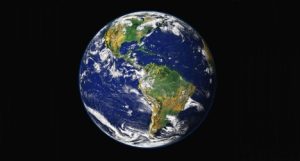Chapter 2: Themes and Concepts of Biology
Biology is the science that studies life. What exactly is life? This may sound like a silly question with an obvious answer, but it is not easy to define life. For example, a branch of biology called virology studies viruses, which exhibit some of the characteristics of living entities but lack others. It turns out that although viruses can attack living organisms, cause diseases, and even reproduce, they do not meet all the criteria that biologists use to define life.
From its earliest beginnings, biology has wrestled with four questions:
- What are the shared properties that make something “alive”?
- How do those various living things function?
- When faced with the remarkable diversity of life, how do we organize the different kinds of organisms so that we can better understand them?
- And, finally—what biologists ultimately seek to understandhow did this diversity arise and how is it continuing?
As new organisms are discovered every day, biologists continue to seek answers to these and other questions.

Viewed from space, Earth offers few clues about the diversity of life forms that reside there. The first forms of life on Earth are thought to have been microorganisms that existed for billions of years before plants and animals appeared. The mammals, birds, and flowers so familiar to us are all relatively recent, originating 130 to 200 million years ago. Humans have inhabited this planet for only the last 2.5 million years, and only in the last 200,000 years have humans started looking like we do today.
Defining life can be more complex than you might realize.Watch this video that offers a short overview of what life is. There are some beautiful images to see as Dr. Paul Nurse discusses what the 5 core principles of life are.
The cell is the smallest unit of life. Many people study yeast, a simple cell that can be studied easily in the lab. Dr. Nurse has studied a gene in yeast that aids with reproduction and realized this had a connection this a reproduction gene in humans. This very old gene, like all genes, helps to dictate life. And these genes can be favored sometime with natural selection which allows some individuals with a certain advantageous trait in a given environment to live longer and reproduce more, passing on that trait.
Life is made up of molecules and chemicals and therefore chemistry is vital to understanding life. There are various chemical reactions occurring within cells that allow the cells and living organisms to survive. And finally, life has to constantly manage information to keep these chemical reactions working and genes functioning. As Dr. Nurse states “Life is and can only operate through information.”
Taken together, these ideas point out some of the core biology principles. Living things are bounded physical entities. The bounded entity is the chemical and informational machine which has a heredity system that determines how it works and with variability it can evolve through natural selection. All life can be viewed from this lens.
Glossary
cell: the smallest structural and functional unit of life
chemistry: the branch of science that deals with the identification of the substances of which matter is composed; the investigation of their properties and the ways in which they interact, combine, and change; and the use of these processes to form new substances
evolve: the process by which the inherited traits of a population of organisms change over successive generations, resulting from variations in genes passed down through reproduction, often driven by adaptation to changing environments and leading to the emergence of new species or variations within a species
gene: the basic unit of heredity, a specific sequence of DNA that contains instructions for making a protein, and is passed from parents to offspring, determining various physical and biological traits of an organism
heredity system: the biological mechanisms and processes by which genetic information, or traits, are passed from parents to their offspring, essentially describing how characteristics are inherited across generations through the transmission of DNA from parent to child
natural selection: the process whereby organisms better adapted to their environment tend to survive and produce more offspring. The theory of its action was first fully expounded by Charles Darwin and is now believed to be the main process that brings about evolution
organism: any living thing, capable of responding to stimuli, growing, reproducing, and maintaining a stable internal environment (homeostasis)
References
Biology and the Citizen (2023) Copyright © 2022 by Utah State University is licensed under a Creative Commons Attribution 4.0 International License, except where otherwise noted.
Introductory Biology: Ecology, Evolution, and Biodiversity Copyright © 2023 by amuir13 and Erica Kosal is licensed under a Creative Commons Attribution-NonCommercial 4.0 International License, except where otherwise noted.

